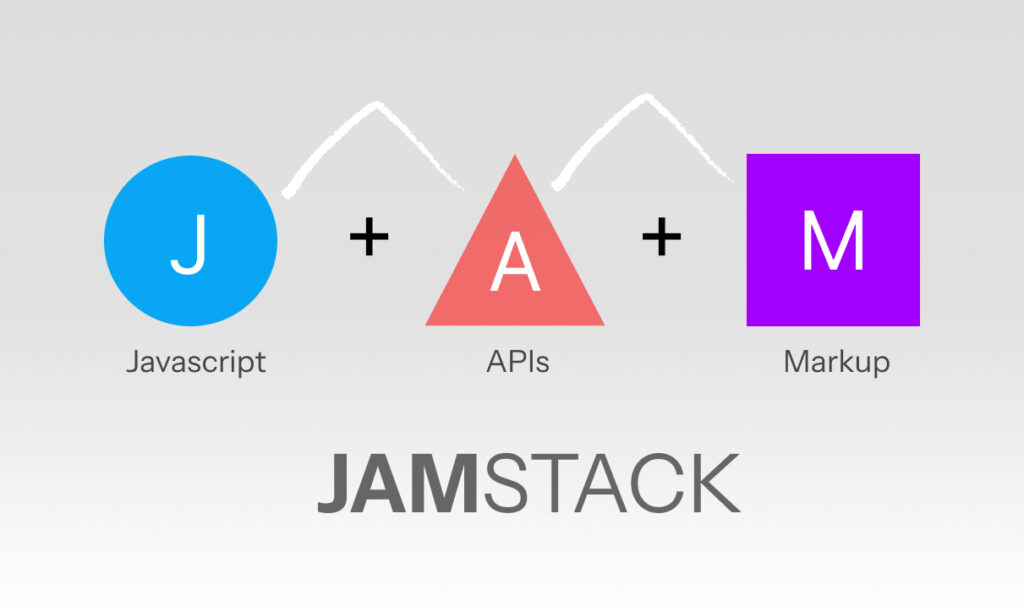
The Renaissance of Static Site Generators: Why JAMstack is Leading the Way
The Renaissance of Static Site Generators: Why JAMstack is Leading the Way
Published on: March 19, 2024
Tags: Javascript, NodeJS, React, Web Development
Explore why Static Site Generators and Jamstack are dominating web development in 2025. Learn how they boost speed, security, and scalability while cutting costs. Discover if this architecture is right for your next project!
In a digital landscape obsessed with complex, server-heavy applications, a surprising shift is happening. Static Site Generators (SSGs) and the Jamstack architecture are experiencing a massive renaissance, and for good reason. This isn’t your grandfather’s “static HTML” of the 90s. Instead, modern SSGs offer a powerful, developer-friendly paradigm that delivers unparalleled performance, security, and a superior developer experience. This guide will unpack exactly why Jamstack is leading the way and how it can benefit your next web project.

What Are Jamstack and Static Site Generators? A Modern Primer
Before we dive into the “why,” let’s quickly clarify the “what.” Understanding this relationship is key.
Jamstack: This is a modern architecture for building websites and apps. The acronym stands for JavaScript, APIs, and Markup. Essentially, you pre-render your site into static files (the Markup) and use JavaScript and APIs to handle any dynamic functionality.
Static Site Generators (SSGs): These are the tools that power Jamstack. SSGs like Next.js, Gatsby, Hugo, and Jekyll take your source files (often written in Markdown or React) and pre-build them into a folder of pure HTML, CSS, and JavaScript files during a “build” process.
Consequently, when a user visits your site, they are served these pre-built files from a CDN, bypassing the need for a traditional web server to build the page on the fly.
Top 5 Reasons Jamstack is Dominating Web Development in 2025
The move towards Jamstack isn’t just a trend; it’s a response to concrete business and user experience needs. Here are the core drivers behind its popularity.
1. Unbeatable Performance and Core Web Vitals Scores
Since Jamstack sites are pre-rendered and served directly from a global Content Delivery Network (CDN), the distance between your user and your site’s files is minimal. This architecture directly leads to:
Near-instant loading times.
Exceptional scores on Google’s Core Web Vitals (LCP, FID, CLS).
A significant SEO boost, as page speed is a direct ranking factor.
2. Ironclad Security by Default
Traditional websites with server-side databases and CMSs are constant targets for attacks. Jamstack simplifies the attack surface dramatically.
No Direct Database Connections: With no server, database, or plugins to exploit, common attack vectors like SQL injection are virtually eliminated.
Reduced Maintenance: You spend less time patching security vulnerabilities and more time building.
3. Unmatched Scalability and Reliability
How does your website handle a sudden, massive spike in traffic? For a Jamstack site, this isn’t a problem.
Handling Traffic Spikes: Because your site is a collection of static files on a CDN, it can handle huge traffic surges without crashing, as there’s no server to overwhelm.
Guaranteed Uptime: CDNs are inherently resilient, offering exceptional reliability and uptime.
4. A Superior Developer Experience and Workflow
Modern developers love working with Jamstack because it empowers them with a more efficient and flexible workflow.
Git-Based Workflows: Developers can use modern version control with Git for everything, enabling better collaboration and streamlined deployments.
Headless CMS Integration: Tools like Contentful, Strapi, or Sanity provide a clean admin interface for content editors while feeding content into the SSG via APIs, separating content from presentation.
5. Significant Cost Reduction and Simplification
Jamstack can dramatically lower hosting and infrastructure costs.
Static Hosting is Cheap (or Free): Serving static files is incredibly inexpensive. Platforms like Vercel, Netlify, and GitHub Pages offer generous free tiers and low-cost plans.
Reduced Server Maintenance: Without a server to manage, you save on administrative overhead and associated costs.
Addressing Common Jamstack Challenges Head-On
Of course, no architecture is perfect. It’s crucial to acknowledge and address potential hurdles.
Challenge: “My site needs dynamic, real-time features.”
Solution: This is where the “J” (JavaScript) and “APIs” in Jamstack shine. You can integrate:
User authentication with Auth0 or Clerk.
E-commerce with Snipcart or Stripe.
Comments systems with Disqus or Utterances.
Serverless Functions for custom backend logic without managing a server.
Challenge: “Build times will be too long for a large site.”
Solution: Modern SSGs like Next.js offer advanced features like Incremental Static Regeneration (ISR). This allows you to build or update specific pages on demand without needing a full site rebuild, making large-scale sites perfectly feasible.
Is Jamstack the Right Choice for Your Next Project?
Jamstack is incredibly versatile, but it’s particularly well-suited for:
Documentation Sites
E-commerce Sites (with the right API-based tools)
Enterprise Corporate Websites
However, it might be less ideal for highly complex, real-time applications like social networks or SaaS dashboards where every page is truly unique to the logged-in user, though the line is constantly blurring.
Ready to Build a Faster, More Secure Website?
The renaissance of Static Site Generators and the Jamstack architecture is a clear signal that the web is maturing, prioritising user experience, security, and developer sanity. By embracing this modern approach, you can build websites that are not only blazingly fast and secure but also a joy to develop and maintain.
Stay ahead of the curve. Keep visiting for more deep dives into modern web development trends, frameworks, and performance tips.
Related Categories: Artification Intelligence (AI), CSS, hosting Solutions, Javascript, news, nodejs, React, SEO, Social, step-by-step guides, Uncategorized, Web Development, Webflow, wordpress